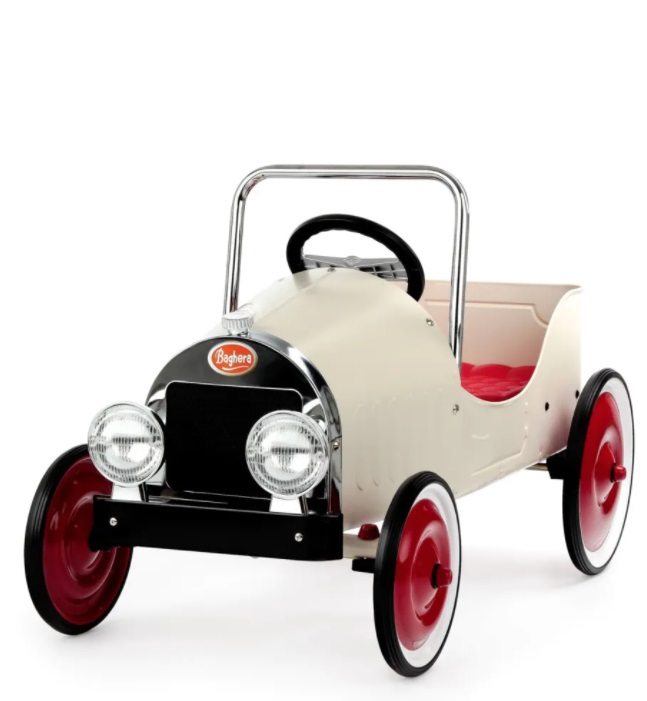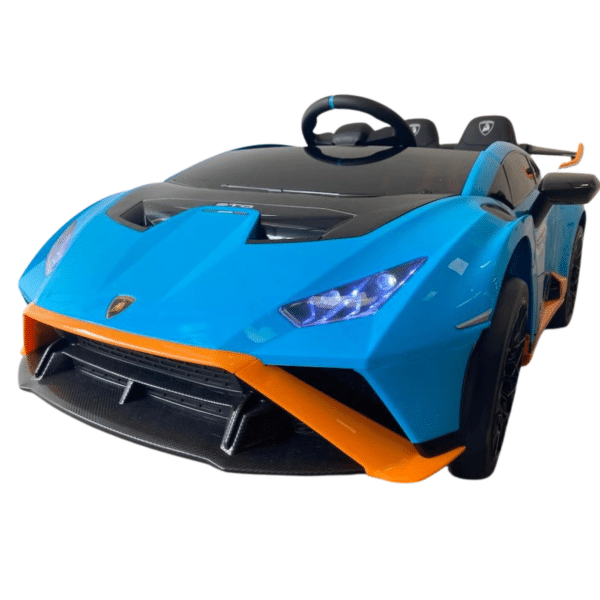New Advice For Deciding On Remote Control Childrens Cars
New Advice For Deciding On Remote Control Childrens Cars
Blog Article
What Should I Be Aware Of About The Battery's Life And Charging Times Of An Electric Ride-On The Kids' Car?
Understanding the battery and charging time of a kid's electric ride-on vehicle is vital for ensuring maximum performance and uninterrupted playing time. Here's everything you must know about - Type of battery
The majority of electric ride-on cars for children are powered by rechargeable batteries. They could be Lithium-ion or lead-acid. Lithium ion batteries have a greater battery lifespan than lead-acid batteries and charge more quickly.
Capacity of Battery
The battery's capacity, measured in ampere-hours (Ah) or Watt-hours (Wh) will determine how long the ride-on car can run on one charge. Batteries with higher capacity provide more playing time before requiring recharge.
Run Time -
The run time of an electric ride-on car refers to the amount of time it is able to continue to operate on a single charge. The run time of an electric ride-on car is dependent on variables such as the battery's capacity and the motor's power. It is also dependent on the terrain and amount of weight the driver.
The typical time to run electric ride-on vehicles is between 30 minutes and 2 hours. Certain batteries with a higher capacity may provide an extended run time.
Charging Time
The charging time refers how it takes to fully recharge a exhausted battery. The charging time can differ based on the battery capacity, charger specifications and the charging method.
The typical charging time for electric ride-on vehicles is between 8 and 12 hours. Certain models, specifically those that use lithium-ion batteries could have quicker charging times.
It's crucial to follow the manufacturer's recommendations for charging to ensure the security and longevity of the battery. The battery's performance may be negatively affected if the battery has been either overcharged or undercharged.
Charging Method
Electric ride-on vehicles are usually equipped with a charging station that can be connected to an ordinary outlet in the home. Some models have fast-charging features or smart charging systems that monitors battery charge state and adjusts charging rate in line with the state of charge.
Check whether the chargers and connectors on the port on the ride-on cars are compatible, so that there is no any damage to the battery or electrical components.
Additional Batteries
Some ride-on electric vehicles will allow you to purchase extra batteries or spares for longer playtime. If you have extra batteries you can exchange the depleted battery for an fully charged battery to minimize downtime.
By understanding the battery duration and charging time of an electric ride-on kids' car it is possible to ensure that your kids will enjoy enjoyable and uninterrupted time as they explore their surroundings. Regularly charging the battery, and following appropriate charging guidelines will maximize battery life and performance. See the top kids cars for more tips including toy the car, toy the car, electric ride on cars, childrens ride on, toy car toy car, pedal car, childrens digger, ride on digger, childs car toy, car toy toy and more. . 
How Can Kids Car Models Be Used Indoors And Outdoors?
Cars for kids are designed with particular features and attributes to fit different settings and use scenarios, whether indoors or outside. This is how the designs differ from indoor Use Cars The Indoor Use Cars
Size and weight-Cars made for indoor usage will be smaller in dimensions and weight, making them easier to maneuver around narrow areas. This includes playrooms and living spaces. They are compact enough to fit in narrow spaces, tight corners and also avoid damaging walls and furniture.
Low Ground Coverage - Vehicles used for indoor use have a very low ground cover to avoid them getting stuck or caught against obstacles like carpets and thresholds. This allows for smooth and uninterrupted mobility over indoor surfaces.
Smooth Wheels The wheels of indoor vehicles are typically made from smooth materials like rubber or plastic. This gives the traction and grip needed for smooth surfaces such as hardwood floors laminate floors, tiles. They are engineered to reduce noise and stop scratching or scuffing surfaces in indoor environments.
Limited Speed - Indoor vehicles are typically restricted to a lower speed in order to ensure safety and control. This can prevent accidents and collisions with furniture like walls or obstacles found inside.
Outdoor Use Cars -
Durable Construction - Cars intended that are designed for outdoor use are constructed from robust materials. These include strong metals or plastics that can stand up to the harsh elements outside such as humidity, sunlight and temperature fluctuations. They are less susceptible to wear and tear resulting from exposure to conditions outside.
Higher Ground Clearance - Outdoor use cars have higher ground clearances to traverse bumps, uneven terrain or other obstacles that are encountered outside. They can also navigate rough surfaces like gravel, pavement or grass without being damaged or snagged.
Traction Tires -- The tires that are used on vehicles that are outdoors usually include treads or patterns that are designed to improve grip and traction while driving on surfaces that are slippery or uneven. This provides better control and stability while driving on terrains that are outdoor.
Weather Resistance. Outdoor cars are often equipped with weather-resistant components like sealed electronics, waterproof casings and rust-proof materials. This protects the car from damage caused by environmental factors. These vehicles can take on rain, mud or even puddles with no loss of performance.
Outdoor vehicles are generally quicker to take advantage of the wide open spaces and the longer distances encountered outside. Children can enjoy a more exciting and thrilling ride.
By considering these design features and features, parents can select a children's car model that is tailored to their particular needs and environment, whether outdoors or indoors, providing a safe, enjoyable and lasting play experience for their child. See the top rated read this for electric kids cars for site recommendations including childs car toy, childrens ride on, electric ride on, childrens electric ride on, electric ride along car, toy toy cars, childs car toy, electric car ride, lambo toy car, toy cars and more. . 
What Are The Factors To Take Into Consideration Before Purchasing An Electric Kids Vehicle? What Are The Pros And Cons?
There are many factors to consider when choosing an electric kids car. Here are some important considerations and information about the cost, size as well as advantages and disadvantages.
Pick an electric car for your child according to the age and size your child. Cars that are small and light may be suitable for smaller and younger children, whereas older and larger children might need cars with ample space.
Dimensions and weight of the Car -
Electric kids' car models come in different sizes. From small-scale to larger-scale replicas, they're available. Be aware of the dimensions and weight of the car in relation with your child's strength, age, and size.
Price Band -
Prices for electric kids' vehicles vary significantly based on a variety of factors, including dimensions, brand and the build quality. Prices for micro-sized cars range between $50 to $200. For larger cars, prices can be up to $800.
The pros and cons of -
Pros -
Electric cars for children provide endless hours of fun, imaginative games, and the opportunity to drive their own vehicle.
Motor Skill Development. Driving an electric vehicle can aid children to develop spatial awareness, coordination, and fine motor skills.
Electric cars are perfect for outdoor play. They encourage physical activity.
Realistic Features: Many electronic cars for kids feature realistic features like working lights, horns, and MP3 playability. This improves the gaming experience.
Cons -
Cost - High-quality electric vehicles for kids can be costly, especially if they are licensed replicas.
Battery life - Electric vehicles rely on rechargeable batteries, which may only last a short period of time or require frequent recharge.
Safety Issues: Electric vehicles can be unsafe if they're not used under supervision of an adult. They can cause accidents, falls, or even entrapment.
Maintenance and assembly - Certain electric cars require assembly upon arrives and also regular maintenance. This includes cleaning, battery care and occasional repairs or parts replacements.
Features and Accessories
Take a look at the features and accessories available for your electric kids' cars with horns that operate with seatbelts, storage compartments and remote controls for parents. Choose a car that comes with features and accessories that work with the child's needs.
Finality, the most effective electric vehicles for children will depend on factors including the age of your child (or size) as well as their interests and financial budget. Before making a decision be sure to compare and research different options. Read reviews and weigh the advantages and disadvantages. Follow the recommended ride on toys kidscars.co.uk advice for site examples including childs car toy, ride of car, toy and car, toy ride, toy car for car, lambo toy car, kiddies cars, ride a toy, ride ons, race car toy and more. .